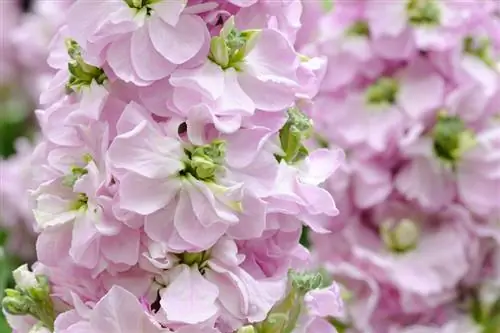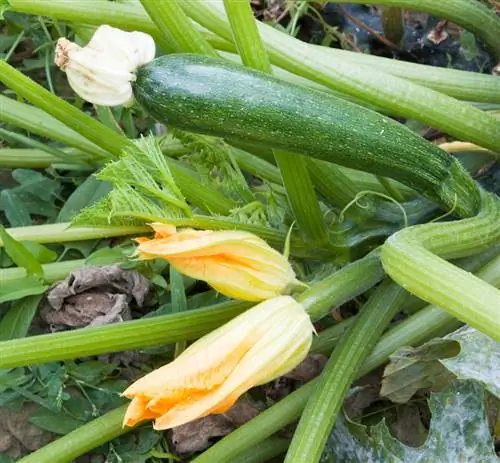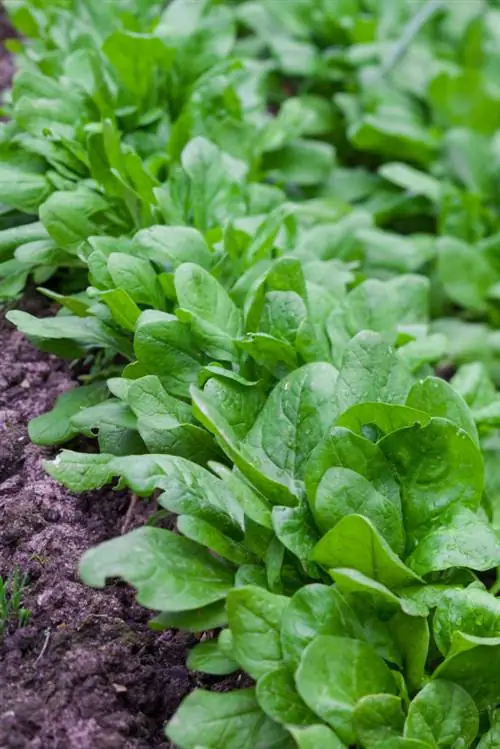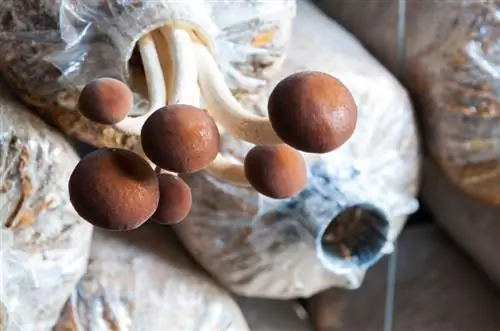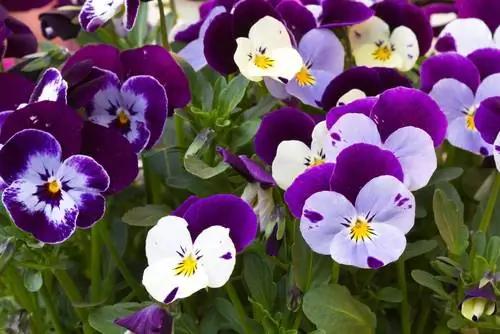- Author admin [email protected].
- Public 2023-12-25 17:45.
- Last modified 2025-01-23 11:22.
The Mediterranean flower beauties exude a beguiling scent in the summer garden. Levkojen adorn the farm garden and natural flower borders with lavish blossoms. The following answers to frequently asked questions show how successful cultivation works smoothly.

How do I care for Levkojen in the garden?
Levkojen, also known as sweet pea, are picturesque summer flowers that bloom from May to October and exude an intoxicating scent. They thrive best in sunny, warm and wind-protected locations with fresh, moist, humus-rich and calcareous soil. Regular watering and fertilizing as well as cleaning out wilted flowers promote magnificent growth.
Planting Levkojen correctly
Plant Levkojen that you have grown yourself or purchased ready-made in the bed in a sunny, protected location from mid-May. Since the summer flower looks great in small groups, create small planting holes at a distance of 20-30 cm. Mix a little compost, horn shavings and rock dust into the excavation. Meanwhile, immerse the potted root balls in water until no more air bubbles appear. Then plant the now potted flowers up to the bottom pair of leaves and water.read more
Care tips
Immigrated from the mild climate of the Mediterranean, Levkojen are not equipped with the robust constitution of native flowers. Therefore, pay attention to the following care program so that the sensitive summer flower thrives:
- After planting, regularly aerate the soil with a rake to protect against blackleg
- If the soil or substrate dries out, water it moderately with normal lime water
- Fertilize the bed every 4 weeks with compost, horn shavings and rock dust or algae lime
- In the pot, fertilize liquidly every 2-3 weeks and add a little rock dust
- Cleaning out wilted flowers creates space for new buds
Primarily, a well-balanced water balance determines the welfare and woe of Levkojen. Therefore, check the moisture content of the soil with your finger every 1-2 days. If the top 2 cm are dry, apply the water immediately to the root disc.read more
Which location is suitable?
The summer flower festival in Levkojen takes place in a sun-drenched, warm and wind-protected location with fresh, moist and humus-rich soil. Good water drainage is essential so that waterlogging does not form after a summer downpour. Last but not least, the soil should have a medium to high lime content
What soil does the plant need?
When it comes to soil conditions, cultivating Levkojen is uncomplicated. The pretty summer flowers thrive in normal garden soil that is fresh, moist, humus and loosely structured. The only special request is a light to medium lime content. You can achieve this by adding algae lime, rock powder or garden lime in conjunction with preparing the soil for planting.
When is flowering time?
The flowering period of Levkojen extends from May to October. To ensure that the summer flower lasts over this long period, regularly cut out withered flower stems. This way you make room for fresh buds. To prevent the flowers of tall-growing varieties from ending up in the dust, support them with a stick from the middle of the flowering period.
Cut levkojen correctly
Consistently cut off withered flower stems from a Levkoje. This effort is rewarded with a well-groomed appearance, fresh shoots of new buds and a long flowering period. Before winter, you should ideally give the flowers time to sow themselves. Then remove the plant residues from the ground and dispose of them in the compost.
Pouring Levkojen
Regular watering is the gardener's top priority as part of Levkojen care. Since the flowers prefer a calcareous substrate, you can safely use normal tap water. Apply the water directly to the root disc using the can nozzle and do not let it rain down on the sensitive beauties from the garden hose.
Fertilize Levkojen properly
If you add compost, horn shavings and rock dust to the soil when planting, your energy needs for the start of the season will be covered. Once again, we recommend applying organic fertilizer shortly before flowering begins, followed by monthly refreshments until the end of flowering.
Diseases
Young Levkojen are often victims of blackleg. This fungal infection targets seedlings that are just setting out for a blooming summer. Experience has proven that consistent aeration of the soil and moderate watering with chamomile tea keeps the cunning fungal spores at bay.
Wintering
The issue of overwintering is unnecessary for annual Levkojen varieties. Biennial hybrids first develop a rosette of leaves in the year they are planted, from which the magnificent inflorescence emerges the following year. For reasons of caution, we recommend protecting this foliage from constant moisture and bitter frost with brushwood during the winter. Cultivated in a pot, you can store the Mediterranean fragrance wonders in the frost-free winter quarters.
Increase Levkojen
As annual flowers, Levkojen are easy to propagate by sowing. Growing behind glass from February onwards is promising, whereas direct sowing from April is fraught with a variety of uncertainties. In addition, an early flower starts the season with a vital growth lead in order to present its flowers particularly early. This is how you sow correctly:
- Fill a seed tray with lean substrate and moisten it slightly
- Sow the seeds in order to press them on with a board as light germinators
- Place in the greenhouse or put a plastic bag over it
- At 16-18 degrees Celsius, germination occurs within 14 days
If the seedlings have produced 2 pairs of leaves, they are separated at a distance of 5×5 cm. Until mid-May, keep the substrate slightly moist and preferably water with chamomile tea to prevent the dreaded blackleg. The young Levkojen are planted at a distance of 20-30 cm.
Levkojen in the pot
In pots, Levkojen transform the summer balcony into a scented garden. As a substrate, we recommend high-quality compost-based potting soil enriched with rock dust and lava granules or sand. If you insert some clay shards (€8.00 on Amazon) between the substrate and the floor opening as drainage, waterlogging has no chance. Check the substrate with a thumb test every 1-2 days to ensure that the surface is dry. The nutrient reserves in pre-fertilized soil last until shortly before the flowering period begins. Then fertilize every 14-21 days with a liquid fertilizer for flowering plants. Additionally, cut off spent flower stems regularly to make room for fresh buds.
Beautiful varieties
- Cinderella Appleblossom: Fairytale flower panicles with 4-5 cm large, double flowers and compact growth; 25cm
- Mammuth Lavender-Lilac: The sturdy stems are covered in large, lavender-colored flowers; 60-90cm
- Pillow Talk: White-pink biennial variety that stands out in the rock garden with its seductive scent; 45cm
- Sommernachtslevkoje: The variety pampers us with a scent symphony of vanilla, clove, cinnamon, nutmeg and cocoa; 20cm
- Ten Week Brilliant Rose: Enchanting summer flower in bright rose red and wonderful fragrance; 35cm

